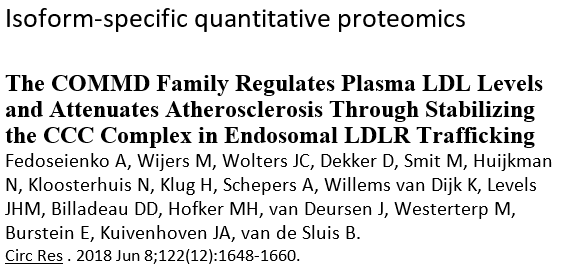
About this edition
PolyQuant was founded in 2007 with the objective of promoting the newly developed QconCAT technology for absolute protein quantification using mass spectrometry. Over the years, PolyQuant has produced numerous QconCATs for applications in various research projects in academia and industry, quantifying selected proteins up to whole proteomes. Based on our proprietary QconCAT technology, PolyQuant provides calibration standards for mass spectrometry and HPLC instrumentations as well as reference standards for diagnostics.
This year we celebrate the 15th anniversary of PolyQuant. We would like to take this opportunity to thank our customers for their confidence in our products and services. Very special thanks go to our employees for their hard work, dedication and motivation to continuously improve our products and services.
Absolute protein quantification … and more
Mass spectrometry enables detection of thousands of proteins with high sensitivity and specificity in a single experiment. To obtain absolute quantities, heavy isotope labeled reference peptides need to be used because mass spectrometry signals do not directly reflect the amount of the detected peptide. For large scale analyses, adding individual reference peptides for each protein of interest means a lot of pipetting work and increasing risk for errors. With this in mind, Beynon et al. developed a new method to provide multiple reference peptides at once [PubMed].
The so-called QconCAT (Quantification conCATamer) encodes a concatenation of tryptic peptides in a single protein allowing the addition of several tens of reference peptides at a known concentration with a 1:1 ratio in a single pipetting step.
Since its first publication in 2005, QconCATs have been used for numerous research projects and special applications (visit our website for selected examples).


Translating disease into Cardiovascular health – TransCard
PolyQuant participated in a multidisciplinary research consortium of two SMEs and four academic partners aiming to gain further insight into the molecular origin of disturbed LDL, triglyeride and/or HDL metabolism, correlated with cardiovascular disease (CVD). PolyQuant produced QconCAT reference standards for quantitative proteomics assays to find and validate targets both in vitro as well as in murine CVD models and population studies. Here we highlight two publications using QconCATs produced for the TransCard project emphasizing the versatility of QconCATs.

Fedoseienko et al. performed targeted proteomics to determine the expression levels of proteins of COMMD, CCC complex, LDLR family, WASH complex and retromer using QconCATs produced during the TransCard project. Distinct identification of COMMD proteins is difficult using antibodies. However, the QconCATs comprised of unique peptides for each COMMD protein, enabling the specific and quantiative detection of all COMMD proteins. [PubMed]
Chatziioannou et al. employed targeted LC-MS/MS proteomics using a set of QconCATs produced for the TransCard project and additional synthetic peptides to evaluate the potential of 47 protein markers as diagnostic biomarkers of necrotizing enterocolitis or late-onset sepsis. They succeeded in finding small protein biomarker panels with excellent diagnostic value for detecting and differentiating these severe life-threatening conditions for neonates. [PubMed]
YPIC Challenge #3

If you are a young proteomics researcher and are looking for a fun way to test your mass spectrometry skills, try solving this year’s YPIC Challenge.
The YPIC Challenge #3 will be officially announced at the PROTEOMIC FORUM | EuPA 2022 (3-7 April 2022, Leipzig) and on Twitter.
Challenges in Proteomics
Recent advances in mass spectrometry increase the value of proteomics in precision medicine, diagnostics and biomarker research. Matching large scale genomics and proteomics data would be another important step forward. But large-scale proteomics data are difficult to validate due to limited quantitative accuracy and variation of reproducibility over time and across instruments.
To account for these variations, Poulos et al. developed a normalization method correcting for technical variation that significantly improved data quality and quantitative reproducibility.
Besides mathematical normalization strategies after data acquisition, the authors state that addition of internal controls will further improve data quality, reproducibility and comparability across laboratories or instruments. Heavy isotope labelled reference standards can be used to control workflow performance from sample preparation to data evaluation.
Preview
Our next Newsletter will feature RePliCal, a QconCAT-based reference standard designed to assess and calibrate HPLC performance.





